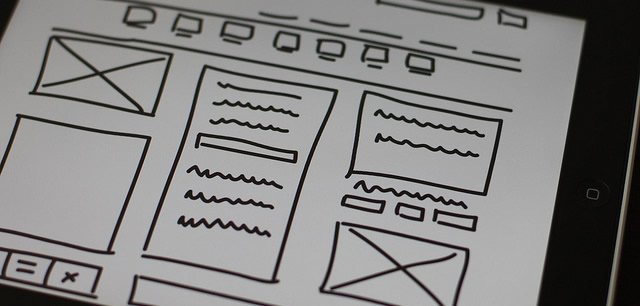
Even the most beautiful wireframe or diagram is a waste of effort if it does not have a business purpose or align to the core strategy of a web project. Information architecture and wireframes are central to web strategy. The creation of these documents are not an arbitrary process. These visual representations establish the guideposts for the end product, and the success of the website or app project depends in a large way on the quality of thinking and planning in the early phases of a project.

With this being said, presenting these web strategy and planning documents is a critical milestone in a web project process. Having early buy-in on an idea helps improve the process of a web project and reduces the scope creep that can be challenging to client / agency relationships.
Information architecture, strategy docs and wireframes are a communication process for web projects. They help communicate ideas and the vision of the project. They serve as the blueprints of the end product, as well as establish benchmarks for features and functionality to be built later in the project. Ever-increasing in popularity, rapid prototyping helps give more relevance to this early planning phase by adding a layer of interactivity and a base of code to the discovery process.
Plan your meeting in advance: Don't just "wing-it" (unless you're a super star presenter and you need a challenge). Planning ahead can help you have a more successful meeting. One easy way is to create a notecard and write down the key points that you are wanting to address during the meeting. Also, don't forget to write down the next steps following the meeting and any areas of sign-off required to progress with the project.
An agenda keeps the flow and builds efficiency: Set goals for your meeting and create an agenda. This will help you remember the point of the presentation and keep your client's focused on what needs to be accomplished.
Provide context: Clients can see inside your head. It is vital to explain the context of each document and what you are trying to achieve by creating information architecture, wireframes and other strategy documents. For clients that wish to "jump ahead" in the process and hash out design, it may be helpful to explain that wireframing or rapid prototyping is a core part of the design process. Also, it is very important to explain what kind of feedback you need from a client at each phase of a project process.
Think about and discuss expectations: It is best to discuss expectations directly, at times. Being forthright with expectations from both sides of the table can improve communications and reduce the problems that are inherent in web projects.
Communicate a purpose: Each document that you present has a purpose. As the author, you must present the purpose (which provides context) of the document as you discuss the elements outlined in the presentation. Whether the focal point is content strategy, search engine optimization or design elements, the client needs to understand the impact of their decisions and how it affects the larger project.
Discuss the refinement process and how the project will progress to the next step. Help the client understand how this collaborative project will progress from an initial discovery and planning process into the future stages of design, production, marketing, technology or launch. Explain what the sign-off process looks like and what you need from a client formally to proceed. Help the client understand when they are making decisions and what stage is to follow once the decision is made.
Send follow-up thank you and summary: Following the meeting, it is best practice to recount the items discussed in the project meeting and any informal agreements that occurred during the meeting or presentation.
by Jonathan Franchell, CEO of Ironpaper - For more tips and hacks: Need to remove a new line after h1 tags? Both web designers and SEO practitioners need to employ headline tags: H1, H2, H3 in several ways to improve web page structure and tag...

The Crowded Arena of the IT Marketplace Updated December 2024 The Information Technology (IT) landscape is experiencing rapid growth and intensifying competition. IT spending is projected to reach nearly 5.1 trillion U.S. dollars in 2024, a...

Updated December, 2024 The field of digital marketing is evolving rapidly in response to new technology and changing buyer expectations. To help career-minded marketers, we’ve rounded up the top 10 skills needed to succeed in the field. These are...
